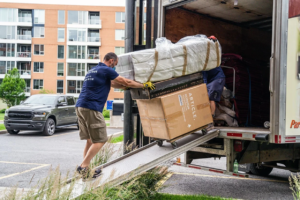Manatee County Residents Battle Persistent Construction Dust Despite New Regulations
Florida Homeowners Continue to Struggle with Construction Dust One Year After Regulations
Nearly twelve months after Manatee County implemented new dust control regulations, residents of Foxbrook subdivision in Parrish, Florida report that the same issues persist. Homeowners who initially voiced concerns in April 2024 about respiratory problems, hazardous driving conditions, and costly property cleaning due to construction dust are experiencing déjà vu as development continues in their area.
"We're seeing the exact same problems we reported a year ago," says Kim Bruenner, a 61-year-old Foxbrook resident who lives with her husband. "The county approved all these construction projects but isn't enforcing the regulations they created to protect taxpayers from property damage and health risks."
Despite county officials establishing specific requirements for developers – including creating comprehensive dust control plans, limiting land clearing to 100-acre sections, halting work during high winds (above 15 mph), and installing sod in cleared areas – many residents insist these measures are either insufficient or poorly enforced.
Construction Companies' Response to Community Complaints
The construction of the Rye Ranch community near Foxbrook remains at the center of resident complaints. Danielle Tocco, Vice President of Communications for Miami-based Lennar, defended the company's practices in a statement to local media.
"As one of several builders operating in the area, Lennar takes community concerns seriously," Tocco stated. "Our construction zone is approximately 95% stabilized with mulch and various preventative measures designed to minimize dust dispersion. While high winds have disturbed some construction zones west and southwest of our site, our team is working diligently to reduce impacts on neighboring communities."
D.R. Horton, another major developer in the region, also addressed the concerns through Tarak Patel, their Sarasota division president. "We establish stormwater pollution prevention plans and follow EPA recommendations and best practices for dust control during land development and home construction," Patel explained.
However, these statements have done little to reassure residents who continue to find their outdoor furniture, vehicles, and homes covered in construction dust on a regular basis.
The Impact on Local Residents and Their Properties
Marcos Alvarez, a 40-year-old Foxbrook resident who lives with his wife and three young children, expressed frustration with what he perceives as a double standard.
"When I built my home, I was responsible for keeping dust down by sprinkling water regularly," Alvarez noted. "These developers should be held to the same standards as individual homeowners, especially considering the scale of their operations."
The dust problem extends beyond mere inconvenience. Residents report significant financial impact from constantly cleaning their homes, vehicles, and outdoor spaces. Some have expressed concerns about potential long-term health effects, particularly for young children, elderly residents, and those with existing respiratory conditions.
Charlie Terenzio, 36, who also lives in Foxbrook with his family, was particularly pointed in his criticism: "These developers have no regard for neighbors. They're focused on maximizing profits by clearing as much land as quickly as possible rather than planning for the long-term health of the community."
County Response and Enforcement Actions
The construction dust issue has expanded beyond Parrish, affecting multiple areas in Manatee County. In a notable enforcement action, county officials recently halted construction at the new SeaFlower community because developers failed to implement sufficient dust mitigation measures, according to county spokesman Bill Logan.
Commissioner Carol Ann Felts, who represents District 1 including Parrish, has advocated for stricter regulations. "What really brought this to the forefront was seeing the same issues arise in town," Felts commented. "This isn't just affecting rural residents—it's becoming everybody's problem."
Manatee County's current enforcement protocol establishes a three-strike system for non-compliant developers:
- First offense: Construction shutdown
- Second offense: Construction shutdown plus financial penalties
- Third offense: Requirement to create a revised dust control plan
Despite these measures, residents argue that enforcement has been inconsistent, and penalties have not effectively deterred poor dust management practices.
Looking Forward: Potential Solutions and Next Steps
The county has announced plans to discuss additional solutions at an upcoming public meeting, though specific details haven't been released. Residents hope this will lead to more stringent enforcement of existing regulations and potentially stronger requirements for developers.
Environmental experts suggest several approaches that might prove more effective than current measures:
- Increasing the frequency of unannounced inspections at construction sites
- Implementing more substantial financial penalties for first-time offenders
- Requiring developers to install permanent dust monitoring equipment at property boundaries
- Creating a dedicated reporting system for residents to document violations
- Mandating more aggressive dust suppression techniques during dry or windy conditions
The situation highlights the ongoing tension between rapid development and quality of life for existing residents—a challenge faced by many growing communities across Florida and the nation.
Insights: Construction Dust and Your Community
Why is construction dust considered dangerous beyond just being a nuisance?
Construction dust contains various particulates that can cause respiratory issues when inhaled. Fine dust particles can penetrate deep into the lungs, potentially exacerbating conditions like asthma or COPD. Additionally, depending on the soil composition, construction dust may contain crystalline silica, which has been linked to serious lung diseases with prolonged exposure. Beyond health concerns, the dust can damage property, reduce visibility for drivers, and decrease overall quality of life in affected communities.
What rights do homeowners have when neighboring construction affects their property?
Homeowners generally have the right to the reasonable enjoyment of their property without undue interference. When construction dust or debris crosses property lines and causes damage or nuisance, residents can report violations to local authorities, document damages for potential compensation claims, or in some cases, pursue legal action if the issue is persistent and severe. Many counties have specific ordinances regulating construction impacts on neighboring properties, though enforcement varies widely between jurisdictions.
How can residents effectively advocate for better dust control in their communities?
Effective advocacy typically involves organizing with neighbors to present a unified voice, documenting instances of dust problems with photos and videos, attending public meetings where development issues are discussed, and maintaining ongoing communication with elected officials. Creating a neighborhood committee to monitor and report violations can also increase accountability. Additionally, researching successful dust control measures implemented in other communities can provide concrete alternatives to present to local officials.
What are the most effective dust control methods that developers should be implementing?
The most effective dust control methods include regular water application to exposed soil, installing wind breaks or dust screens around the perimeter of construction sites, applying chemical soil stabilizers to inactive areas, minimizing the amount of land cleared at any one time, promptly establishing vegetation on completed areas, and halting work during high-wind conditions. Additionally, creating designated construction entrance/exit points with gravel or concrete pads helps prevent vehicles from tracking soil onto public roads.













